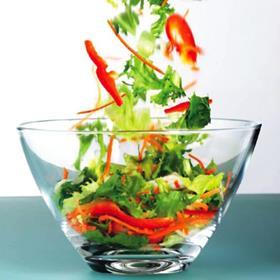
Developments within the fresh-cut convenience sector over the past 12 months have proven there is still plenty of potential for sustaining the kind of growth already seen in the sector, but there has also been a notable shift in attention towards southern Europe during the course of the year. While markets like the UK and Germany are already well established, with leading companies making good headway in terms of product development and marketing, in 2008 countries like Spain and Italy emerged as those areas where the recent industry boom seen to the north may soon be repeated.
Spain’s general development as a major consumer market for fresh produce has been widely reported over the past few years, but it was only in the past year that details of a major escalation in demand for pre-prepared, convenient fruit and vegetable ranges became apparent. According to Afhorla, the Spanish market for fresh-cut convenience products saw annual growth of 6 per cent between January and August 2008, and are set to grow further in the coming year.
Florette, a leading supplier of fresh prepared salads and vegetables and therefore a reasonable barometer of the European market, said it had decided to expand its operations in both Spain and Italy on the back of rising demand from customers.
In Italy, meanwhile, Chiquita’s decision to begin developing a major presence for its fresh-cut and convenience products pointed to a similar expansion across the Tyrrhenian. The company’s head of marketing and retail sales Maurizio Pisani said the launch of fresh fruit smoothies under the Frullati trademark would be the first in a series of product launches targeting the growing market for pre-prepared fresh fruit in the country.
Italy and Spain also continued to increase in stature as major suppliers of fresh-cut convenience products, with the notable example of Italian firm La Linea Verde establishing a joint venture with AN, part of leading Spanish company Navarra, to develop convenience products in Spain under its Dimmidisì brand. Sales of fresh-cut fruit and vegetables from Spain rose by 7 per cent during the first half of 2008, with the region of Murcia confirmed as the country’s leading producer, accounting for 62 per cent of its total 14,00ha of convenience sector production.
Elsewhere in Europe it was essentially business as usual, with the likes of Chiquita, Capespan, The Greenery, Dole and Del Monte all continuing to build on recently launched fresh-cut programmes while leading names in the bagged salads sector like Florette and Bonduelle all witnessed good sales growth.
In terms of technology, a number of further advances were made in several areas, including sorting, grading and packaging. As this year’s list of Freshconex exhibitors confirms, the dedication of companies that are focused on developing technology and packaging for specifically tailored to the fresh-cut business remains one of the sector’s strongest assets.
Standing out from the crowd somewhat this year in terms of its relative success in the fresh-cut convenience sector was Icelandic prepared products supplier Bakkavör, which said it had seen a fall in its operating profit for the first half of 2008 as a result of rising costs and the ongoing restructuring of its business. The company also ended its interest in Greencore, a manufacturer and supplier of prepared foods based in Ireland. The coming year will surely provide a major test of the company’s ability to refocus and push forward plans to streamline its business.
The going certainly won’t be easy in 2009. As the recession begins to hit consumer spending in a number of European markets, the likelihood is that the European market for fresh-cut convenience products will, at the very least, come some considerable pressure. At best, it will manage to sustain recent growth and slowly but steadily build on new sales opportunities in markets such as Italy, Spain and the Nordic countries. The worst-case scenario, of course, is that consumers will begin to pull back from paying a premium for convenience in order to reduce their overall monthly spend. Only time will tell which turns out to be closer to the reality.






No comments yet